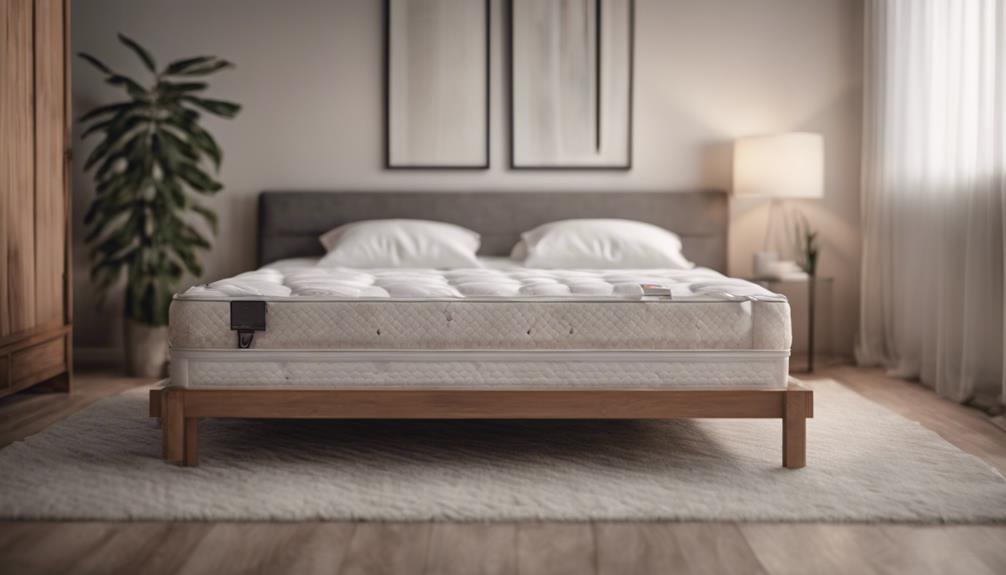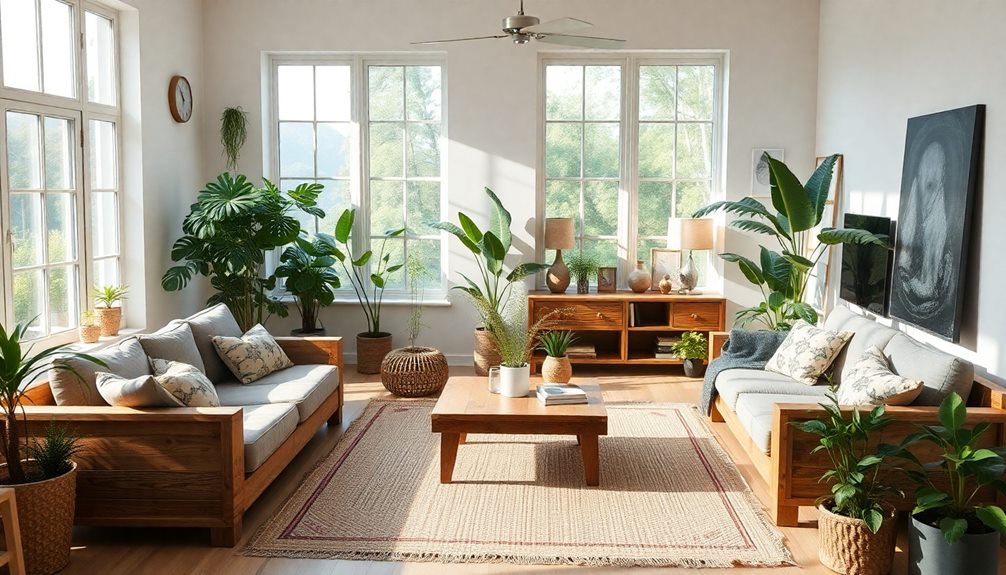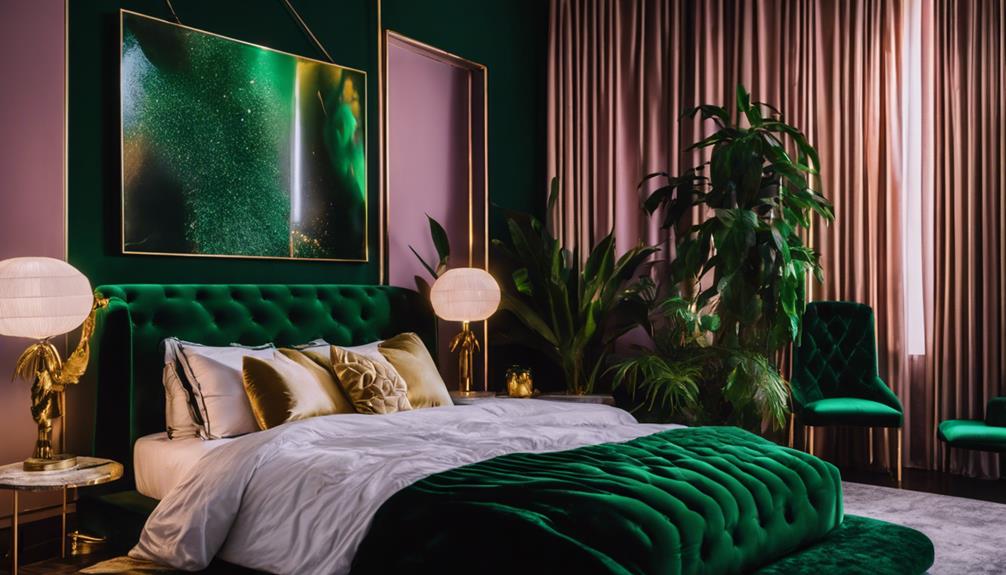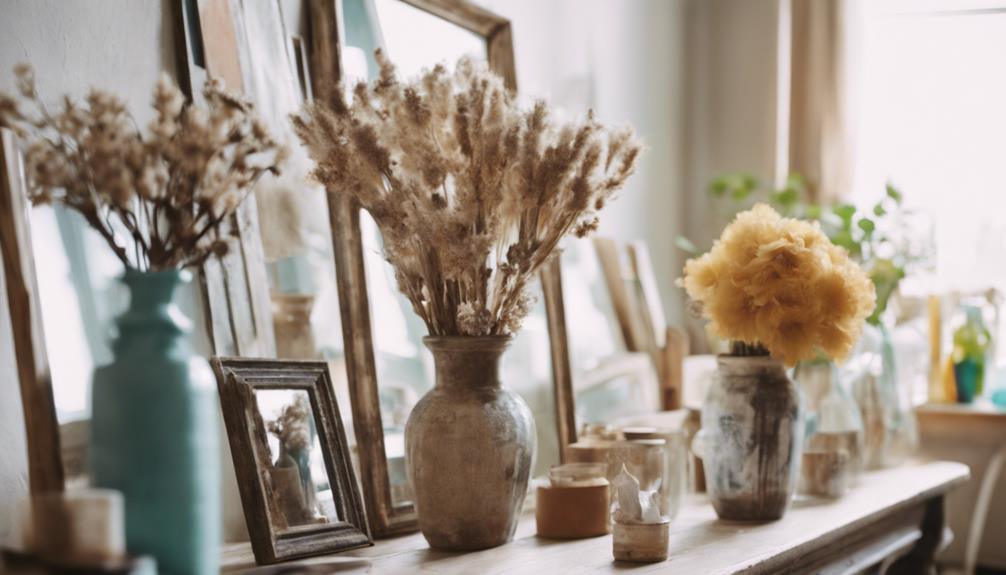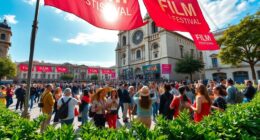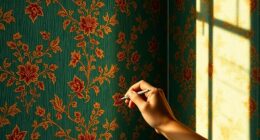Interior decorating is indeed a valuable skill that melds creativity with practicality to transform spaces into both visually appealing and functional areas. It involves understanding design principles, client preferences, and effective project management. By mastering spatial awareness, color coordination, and attention to detail, decorators can create cohesive and inviting spaces. Developing these skills not only enhances living environments but also adds value to properties. If you're curious about the essential skills, impact of design principles, evolution of techniques, communication's role, and trends in interior decorating, there's more to discover in the detailed information provided.
Key Takeaways
- Interior decorating is a skill that involves understanding design principles.
- It requires mastering spatial awareness, color coordination, and decor selection.
- Strong project management skills are essential for successful execution.
- Communication plays a crucial role in translating clients' preferences into designs.
- It involves creatively curating decor items to transform living and work spaces.
Importance of Interior Decorating Skills
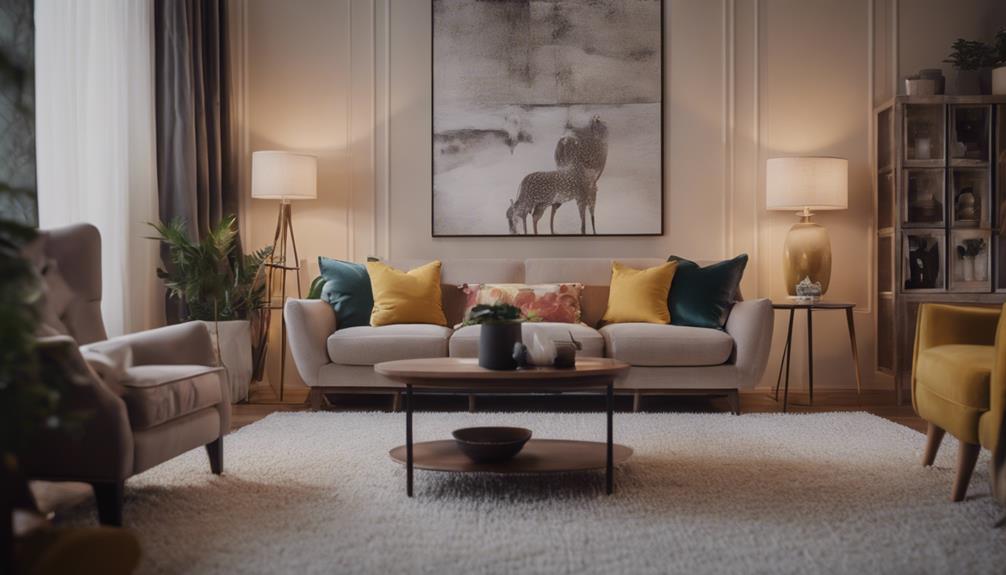
Interior decorating skills play a significant role in transforming living and work spaces by enhancing both their aesthetics and functionality. When it comes to interior design, honing our skills in understanding clients' preferences, project management, and design principles is essential. Working closely with clients allows us to create spaces that not only look visually appealing but also cater to their specific needs and lifestyle. Developing strong project management skills guarantees that our interior decorating projects are executed smoothly and efficiently, meeting deadlines and budget requirements.
In the domain of interior decorating, our skills in spatial awareness, color coordination, and design principles are what set us apart. By mastering these skills, we can create harmonious spaces that reflect the client's personality and style. Additionally, having a keen eye for detail and the ability to manage projects effectively are crucial for delivering successful interior design solutions. By continuously improving our interior decorating skills, we can elevate the aesthetics and functionality of any space we work on.
Key Elements of Interior Decorating
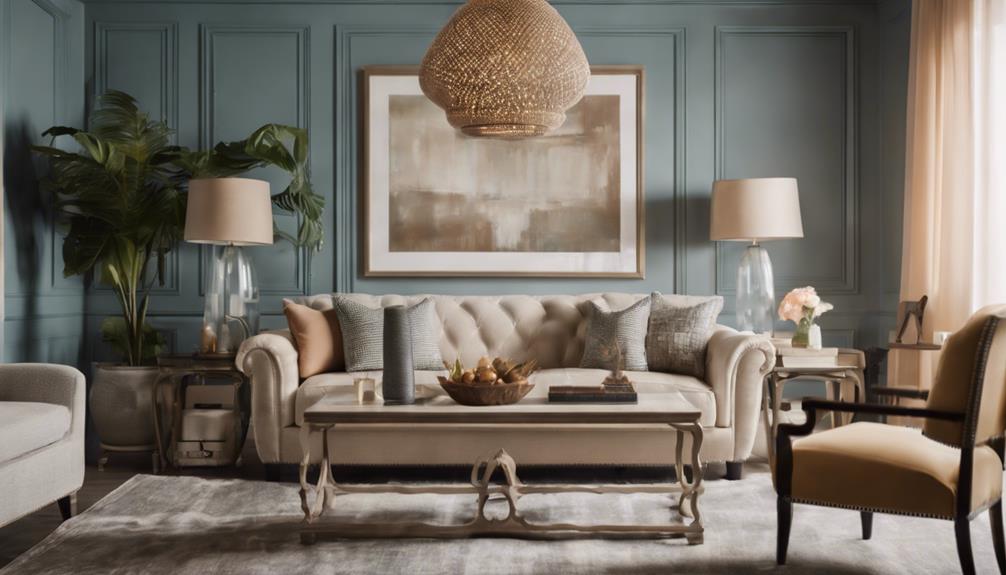
Exploring the world of interior decorating reveals a plethora of key elements that shape and enhance living and work spaces. Interior designers utilize a range of skills to transform rooms into functional and visually appealing environments. Attention to detail is paramount in this process, as every element contributes to the overall aesthetics of a space. Understanding color theory, texture, balance, and scale are essential skills that interior decorators must possess to create harmonious designs. By incorporating these elements effectively, decorators can elevate the look and feel of a room.
The design process followed by interior designers involves a systematic approach to curate decor items like furniture, accessories, and art. This process requires creativity and the ability to interpret and execute a client's vision. Interior decorators play an important role in improving the functionality and visual appeal of a room without the need for architectural knowledge. Their skills are crucial in selecting and coordinating decor elements to create inviting and cohesive living and workspaces.
Benefits of Developing Decorating Skills
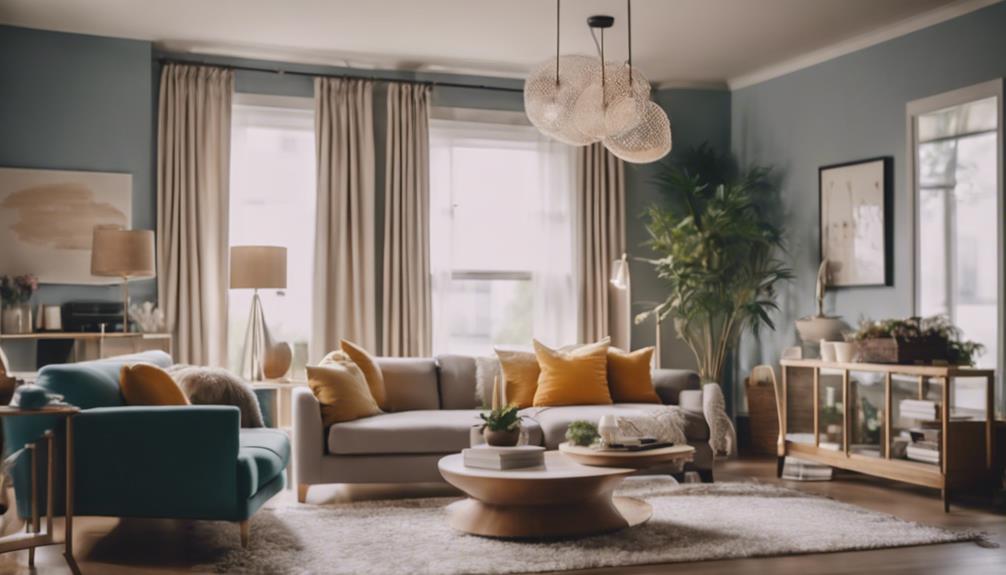
Developing decorating skills offers numerous benefits, including enhancing living spaces to create a more visually appealing environment. Personalizing home decor allows for a unique expression of individual style and preferences through the arrangement of furniture and accessories.
Boosting creativity and style through mastering decorating principles leads to more cohesive and aesthetically pleasing room designs.
Enhancing Living Spaces
Enhancing living spaces through the development of decorating skills offers a myriad of benefits, including the creation of visually appealing and functional environments. Interior designers with strong interior decorating and design skills can transform spaces into aesthetically pleasing areas that meet clients' needs.
By mastering these skills, individuals can personalize their living spaces to reflect their unique style and personality, making the environment more inviting and comfortable. Moreover, well-developed decorating skills can increase the value of a property by incorporating attractive design elements and enhancing overall aesthetics.
Learning how to decorate effectively also provides cost-effective ways to revamp spaces without the need for major renovations or structural changes. Ultimately, developing these skills can lead to the creation of harmonious and comfortable living environments tailored to individual preferences and needs.
Personalizing Home Decor
Personalizing our home decor through the development of decorating skills allows us to showcase our unique style and personality within our living spaces. Interior designers and decorators, along with other design professionals, emphasize the importance of personalizing home decor to create a space that truly reflects who we are.
By honing our decorating skills, we can arrange furniture, accessories, and color schemes in a way that not only looks visually appealing but also enhances our mood and productivity. Additionally, personalized home decor can contribute to our overall well-being.
Developing these skills helps us avoid costly mistakes and guarantees that our living space aligns with our tastes and preferences, saving both time and money in the long run.
Boosting Creativity and Style
Boosting creativity and style in interior decorating involves infusing living spaces with a unique and personalized touch that reflects individuality and aesthetic preferences. Interior designers who excel in this skill set often enhance their career in interior design by developing a strong design portfolio that showcases their ability to create visually appealing and harmonious room designs.
Understanding color theory is essential in mixing and matching textures, colors, and décor elements to achieve a cohesive look. Additionally, communication skills play a significant role in interpreting clients' needs and preferences to deliver personalized and customized living environments. By mastering decorating skills, one can elevate the overall appeal of a space, potentially increasing property value and attracting potential buyers.
Essential Skills for Interior Decorators
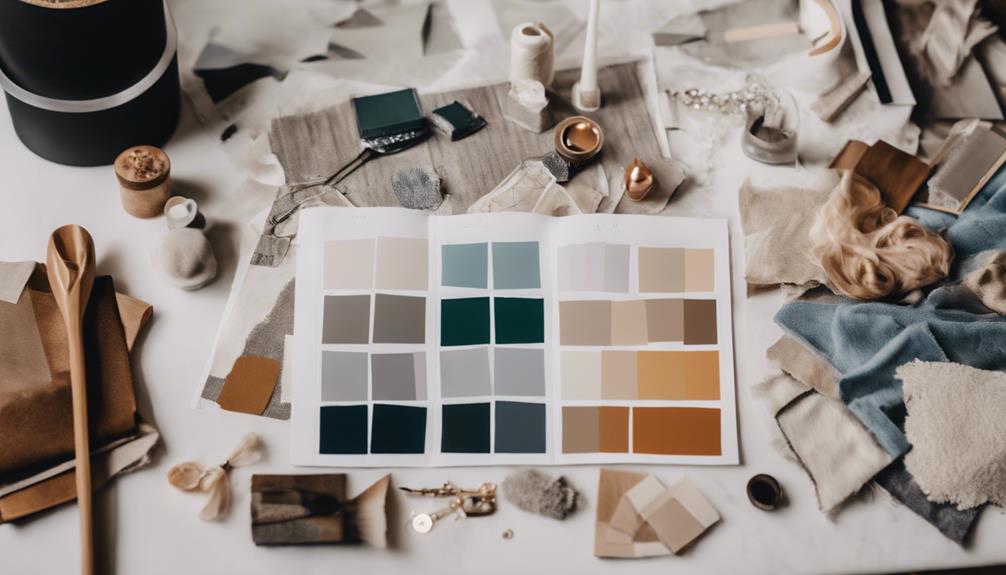
Interior decorators require a combination of skills in color coordination, spatial arrangement, and design principles to excel in their profession. These essential skills enable interior designers to create harmonious and visually appealing spaces for their clients. Here are the key skills needed for interior decorators:
- Color Coordination: Mastery of color theory and the ability to select and combine colors effectively to evoke the desired mood and atmosphere in a room.
- Spatial Arrangement: Understanding how to optimize the layout of furniture, decor, and functional elements within a space to enhance flow and functionality.
- Design Principles: Knowledge of fundamental design concepts such as balance, harmony, proportion, and scale to create well-balanced and aesthetically pleasing interiors.
Impact of Design Principles in Decorating
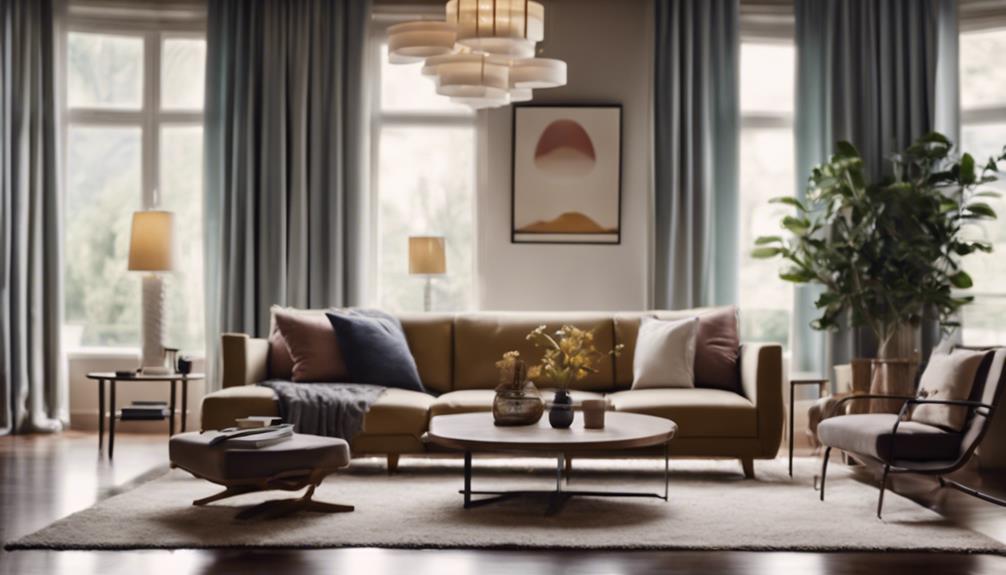
Design principles play a significant role in interior decorating by shaping the overall look and feel of a space.
Color psychology helps in creating specific atmospheres, while patterns add visual interest and personality.
Understanding spatial arrangement guarantees furniture and decor are placed harmoniously for a balanced and cohesive design.
Color Psychology in Design
Exploring the impact of color psychology on design principles in interior decorating reveals how different colors influence emotions, behaviors, and perceptions within a space. When considering color choices for interior decorating, it's essential to understand how each color can affect the overall feel of a room.
Here are key points to keep in mind:
- Emotional Influence: Colors evoke specific emotions; warm tones like red and yellow can energize a room, while cool shades like blue and green promote relaxation.
- Visual Impact: Using color theory to create contrast in schemes can add visual interest and highlight focal points in a space.
- Cultural Associations: Color choices in interior decorating are often influenced by cultural associations and personal preferences, shaping the atmosphere of a room.
Use of Patterns
Patterns in decorating play a significant role in adding visual interest and depth to a space, enhancing the overall aesthetic appeal.
When incorporating patterns into an interior decor scheme, understanding design principles such as balance and rhythm is essential. By mixing different patterns thoughtfully, you can achieve a dynamic yet cohesive look.
Keep in mind that patterns can influence how we perceive space; larger patterns create a cozy, intimate feel, while smaller patterns can make a room seem more spacious.
To create a well-balanced and visually appealing decor, harmonize patterns with other design elements like colors and textures.
Spatial Arrangement Importance
Incorporating design principles such as balance and rhythm in interior decorating greatly impacts the spatial arrangement of a room, enhancing both its functionality and aesthetic appeal.
When considering spatial arrangement, interior designers prioritize the following key aspects:
- Functionality: Design principles help optimize the layout of furniture and decor to guarantee efficient use of space and promote ease of movement within the room.
- Aesthetics: By applying principles like proportion and harmony, designers create visually pleasing arrangements that enhance the overall look and feel of the space.
- Coherence: Understanding the influence of design principles allows decorators to achieve a cohesive and well-balanced spatial arrangement, resulting in a harmonious environment that complements the room's purpose.
Evolution of Interior Decorating Techniques
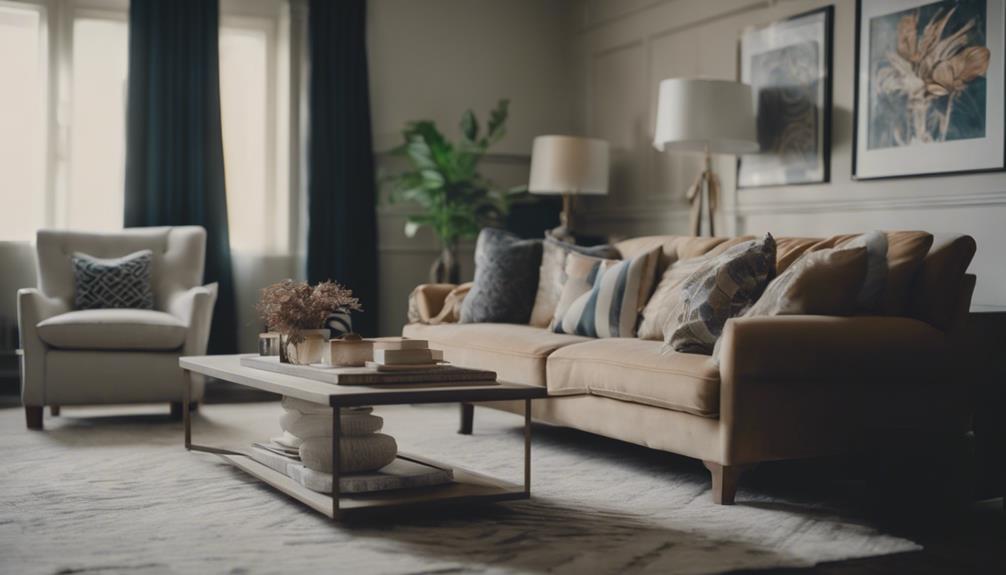
Over time, interior decorating techniques have evolved greatly, embracing new materials, styles, and methods to enhance living spaces. Historical interior decorating techniques have played a significant role in shaping the design field, blending traditional and contemporary elements to create unique and innovative spaces. The art and design principles from different time periods continue to influence modern interior decorators, inspiring them to create harmonious and aesthetically pleasing environments.
With the advent of computer-aided design (CAD) tools, interior designers now have access to advanced technology that allows for more precise planning and visualization of their ideas. This technological shift has revolutionized the way interior decorating is approached, enabling professionals to streamline their processes and bring concepts to life with greater efficiency.
Incorporating sustainable and eco-friendly practices has also become a prominent aspect of modern interior decorating techniques. Designers are increasingly focusing on using environmentally conscious materials and methods to create spaces that aren't only visually appealing but also sustainable for the long term. As the design field continues to evolve, interior decorators adapt their techniques to meet changing client preferences, industry standards, and design innovations.
Role of Communication in Decorating
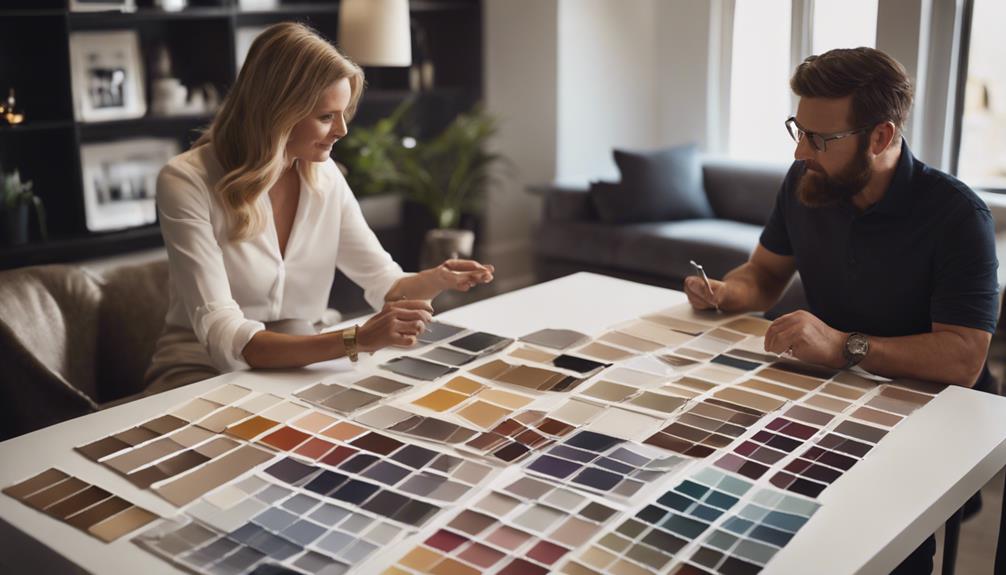
As interior decorating techniques continue to advance, effective communication remains a cornerstone in understanding clients' needs and translating design visions into successful projects. Communication plays an essential role in interior decorating by facilitating collaboration and ensuring that clients' preferences are accurately captured and reflected in the design process. Here are key points highlighting the significance of communication in decorating:
- Understanding Clients: Communication is crucial for decorators to comprehend clients' needs, preferences, and expectations, laying the foundation for a tailored design approach.
- Translating Design Ideas: Clear and concise communication enables decorators to convey design concepts accurately to clients and other professionals, ensuring everyone is on the same page throughout the project.
- Collaboration: Effective communication fosters seamless collaboration between decorators, contractors, suppliers, and vendors, leading to a cohesive and well-executed decorating process.
Implementing Trends in Interior Decorating
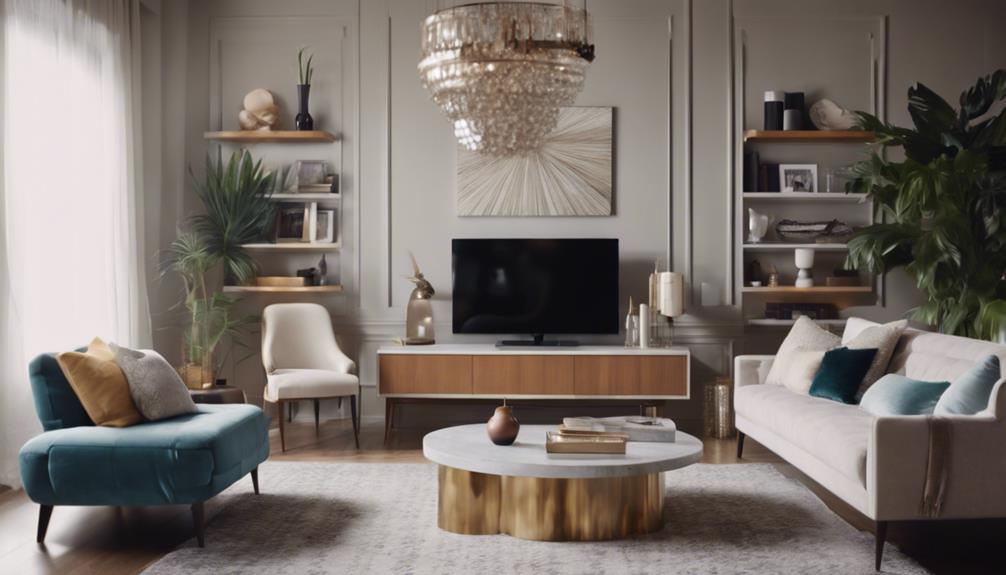
When implementing trends in interior decorating, we prioritize sustainability and eco-friendly design practices to promote environmental consciousness. Incorporating sustainable design elements not only benefits the environment but also enhances the overall aesthetics of a space. Smart home technology is another trend that can elevate interior decorating by adding convenience and functionality to living areas. By integrating minimalist and Scandinavian design principles, spaces can achieve a clean, uncluttered look that is both visually appealing and calming. Additionally, including biophilic design elements, such as natural light and indoor plants, can greatly improve the well-being of occupants by fostering a connection to nature within the space. Personalizing interior decorating projects allows for unique and tailored design solutions that reflect the individuality and preferences of clients.
| Trend | Description | Benefits |
|---|---|---|
| Sustainable Design | Focuses on eco-friendly practices and materials to promote environmental consciousness. | Enhances aesthetics and reduces environmental impact. |
| Smart Home Technology | Integrates technology to increase convenience and functionality in living spaces. | Improves efficiency and control over various home systems. |
| Minimalist Design | Emphasizes simplicity, clean lines, and a clutter-free environment for a visually appealing space. | Creates a calming and uncluttered atmosphere. |
| Scandinavian Design | Draws inspiration from Nordic countries, featuring simplicity, functionality, and natural elements. | Enhances natural light and creates a cozy, inviting ambiance. |
| Biophilic Design | Incorporates nature into interior spaces to improve well-being and connection to the natural world. | Enhances mental health and overall sense of tranquility within the space. |
Frequently Asked Questions
What's the Difference Between Interior Design and Interior Decorating?
Interior design involves a Bachelor's Degree in Fine Arts. Interior designers focus on commercial design, architectural systems, and building codes. Licensing requirements for interior designers often involve experience under a licensed professional.
Interior decorating typically requires an Associate's Degree in Interior Design. Interior decorators specialize in residential design and decor choices. The distinction lies in educational background, project scope, and industry knowledge.
Is Interior Decorating a Good Career?
Interior decorating can be a promising career path for individuals who appreciate design and aesthetics. It offers opportunities to enhance spaces, cater to client needs, and manage projects. With skills in CAD, design sense, and budget management, interior decorating can be a fulfilling profession.
The average salary of around $33,404 per year in the U.S. adds to its appeal. Overall, interior decorating presents a good career option for those inclined towards creative and practical work.
What Is Another Name for an Interior Decorator?
Another name for an interior decorator is an interior stylist or interior design consultant. This term highlights the focus on the aesthetic aspects of a space rather than the technical or structural components.
Interior decorators collaborate with clients to understand their preferences and vision for the space, working on enhancing visual appeal and functionality through decor and furnishings. They select and arrange furniture, accessories, colors, and textures to create a cohesive design.
Do You Need to Be Able to Draw to Be an Interior Decorator?
We don't necessarily need to be able to draw to be an interior decorator. While drawing skills can be beneficial for communicating ideas visually, in today's digital age, there are alternative tools like mood boards and design software.
Some decorators focus more on decor selection and arrangement rather than detailed drawing. Although clients may appreciate sketches, it's not always a strict requirement for the role.
Interior decorating encompasses various skills beyond drawing.
Conclusion
To sum up, interior decorating is indeed a valuable skill that can greatly enhance the aesthetics and functionality of a space. By mastering key elements such as color, texture, and balance, individuals can transform any room into a beautiful and harmonious environment.
For example, a recent study showed that homes with well-decorated interiors tend to sell faster and at higher prices than those without professional design touches. So, developing your decorating skills can truly make a difference in both personal and professional settings.

